Black cherry (
Prunus serotina) is a common deciduous tree in Midwestern and Eastern forests, but it’s unusual. Most of the deciduous trees in these North American woodlands are wind-pollinated, producing separate male and female flowers before the leaves emerge in early spring. Black cherry trees, however, flower in late spring after the leaves have emerged, producing showy white flower racemes that attract a number of native bees. The resulting fruit, maturing from red to dark blue, is sought after by berry-eating birds, including waxwings and American robins.
Black cherry can be used as a stand-alone shade tree in medium, well-drained soil, or incorporated into a naturalized planting along the edge of a woodland. The interesting scaly bark, showy white flowers and vibrant fall foliage color make this an attractive tree to use in both traditional and naturalized landscapes.
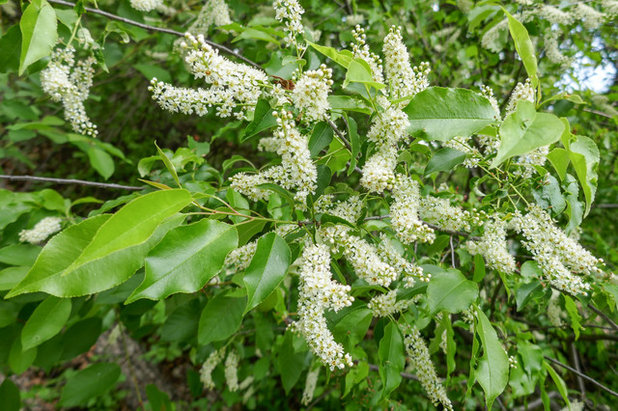
Holm Design & Consulting LLC
Botanical name: Prunus serotinaCommon name: Black cherry
Origin: Native to North America, from eastern North Dakota east to Maine in the north and from Arizona east to Florida in the south
Where it will grow: Hardy to minus 35 degrees Fahrenheit, or minus 37 degrees Celsius (USDA zones 3 to 9; find your zone)
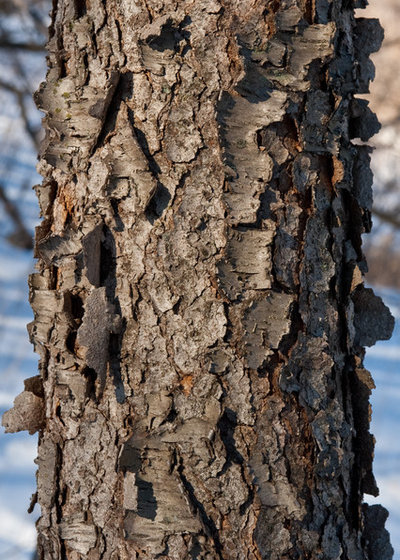
Holm Design & Consulting LLC
The scaly, dark gray bark of a mature tree
Typical plant communities: Deciduous woodlands, woodland edges, savannas and lowland sites near rivers or streams
Water requirement: Little watering needed once established; prefers medium to dry soils
Light requirement: Partial sun to full sun
Mature size: 50 to 60 feet tall and 25 to 30 feet wide
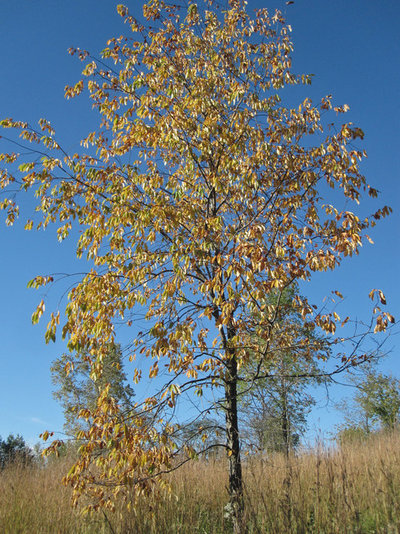
Holm Design & Consulting LLC
A black cherry tree with fall colorBenefits and tolerances: Tolerates most soil types
Seasonal interest: Yellow, orange, copper or red fall color; large flower racemes in late May or early June composed of many white flowers
When to plant: Spring or fall; potted plants available from most native-plant nurseries in areas where it occurs
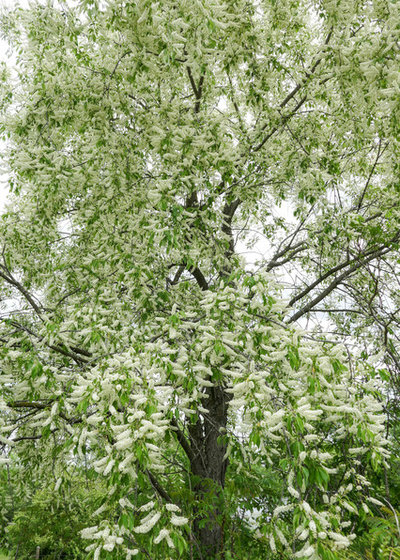
Holm Design & Consulting LLC
A black cherry tree in full bloom in late May in Minnesota
Distinguishing traits. Black cherry is typically a single leader tree with smooth bark and prominent lenticels (the white to cream horizontal markings on the bark). As it matures, the bark becomes dark gray with raised, scaly plates that are distinctive. White flowers appear in spring, followed by dark blue fruit in late summer that is sought after by berry-eating birds. The leaves take on a bright red, copper or orange color in fall.
How to use it. Black cherry can be used as a stand-alone shade tree, along the edge of a woodland or incorporated into openings in a woodland.
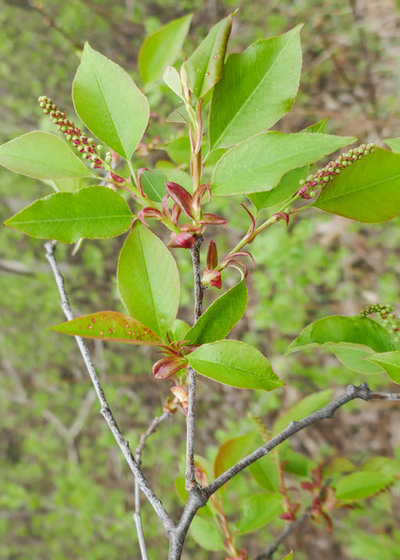
Holm Design & Consulting LLC
Newly emerged bright green, glossy leaves and developing flower racemes
Planting notes. Black cherry, like many large trees, develops an extensive taproot and therefore cannot be easily transplanted. Make sure you site your tree in its forever home for this reason.
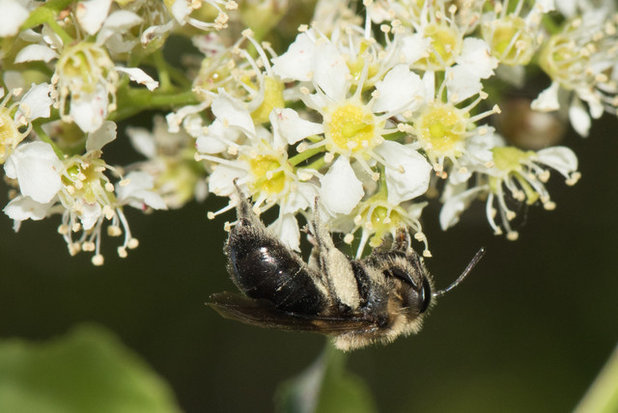
Holm Design & Consulting LLC
Pollinator notes. Black cherry is one of the minority of deciduous trees in North America that rely on insect pollination. The large white flower racemes cover the trees while they’re in flower and attract native bees, including mining bees (
Andrena spp.), like the one shown here.





